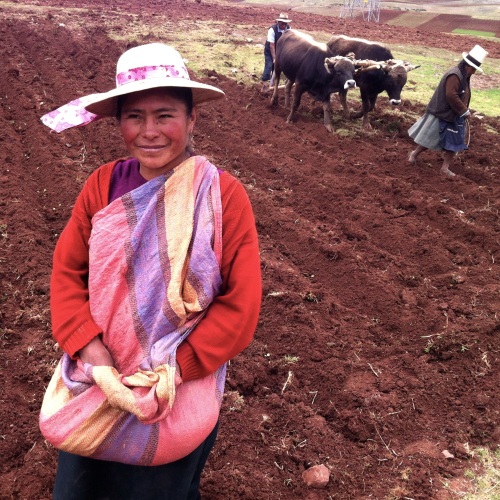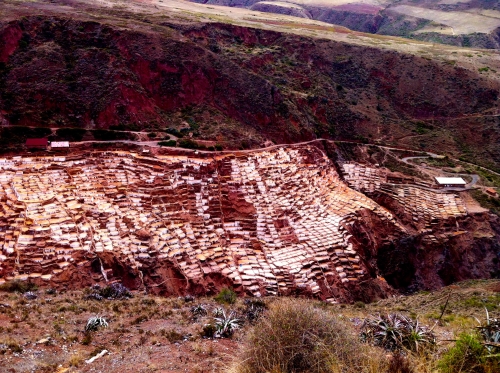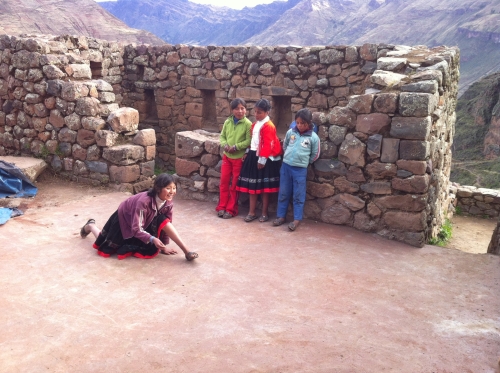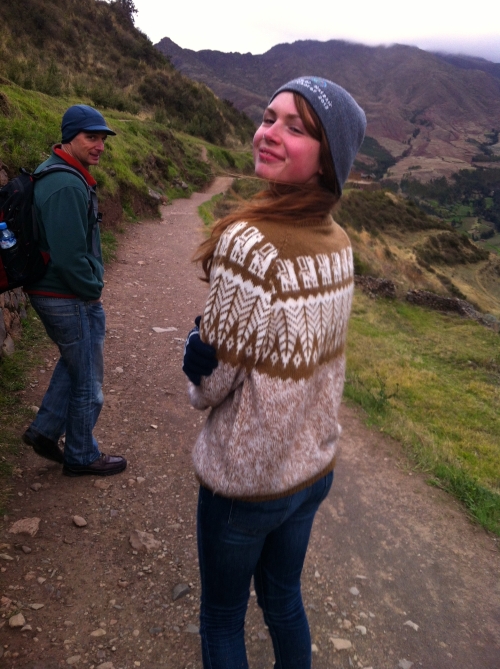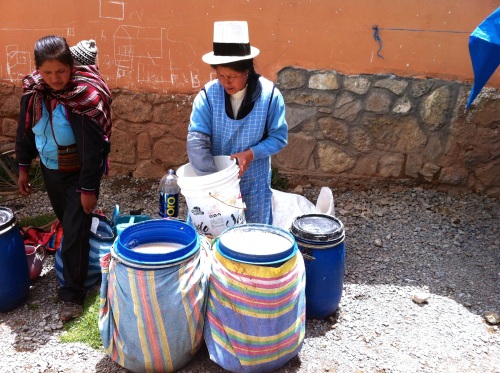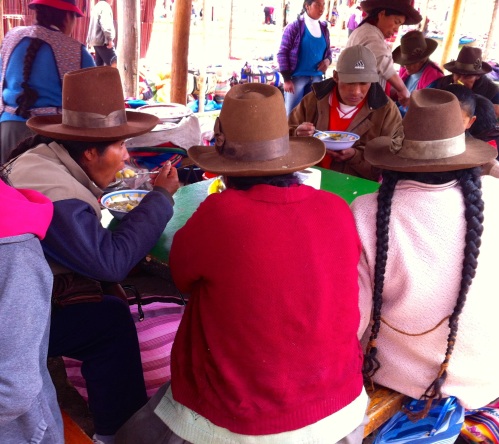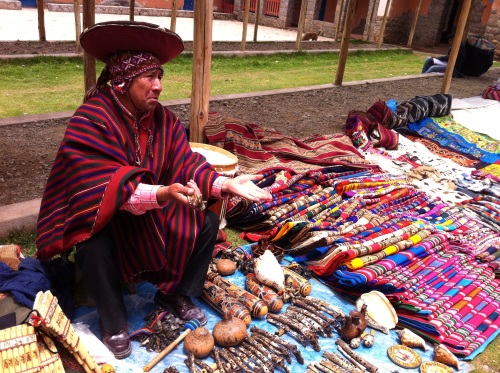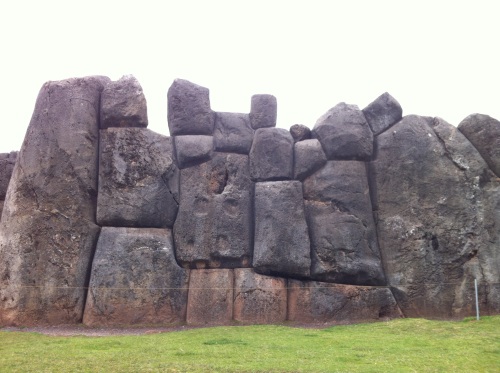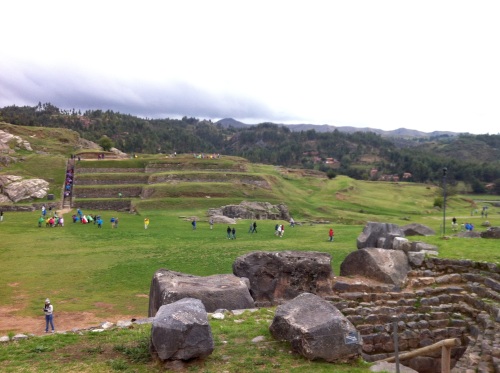Yap, this post is long, as was our day spent in the Sacred Valley. I should mention that El Valle Sagrado is full of pretty little towns, Inca sites, and markets (such as Chinchero). After visiting Chinchero, we slowly made our way to Moray. Here are some scenes from our drive to Moray.
Moray is an impressive look-alike huge amphitheater. Different levels of terraces are carved into earth, each layer is at a different depth. The theory is that the Incas used the terraces as a big experiment for crop growing- each crop would be planed at a different level, as some researchers have established that there is a variation of about 4 degree C between each of the terrace levels. Don’t forget the Tourist Ticket bought in Cusco, to enter this site.
Once in Moray, you’ll sometimes notice small groups of people performing some “earthing” or “grounding” in the very center of bottom circle, as a ritual. It’s a religious Incan ritual “El pago a la Pacha Mama” (the retribution to mother earth), an Andean ritual where one thanks the earth for its gifts and asks for fortune.

and climbing down from one level to the other on special “stairs” placed by the Incas into the walls
And now, back on the winding road through the Sacred Valley, towards the Salinas.
One of the most astonishing places to see, both from above- high in the mountain, and from ground level, are the Salinas. Thousands of salt pans that have been used to extract salt since Inca times. The pools are fed by a saltwater hot spring, which has been diverted into the salt beds where the water evaporates and leaves crystallized salt to be harvested.
After lunch in the village of Urubamba, we headed to the village of Pisac, our final destination for the day. Many people arrive to Pisac on Sunday, for its BIG market. We went there for the spectacular views. After crossing town, we start climbing up hill with our car, up and up and up. As if we didn’t see amazing panoramas until now, the ones from the Pisac Inca ruins were wonderful. Temples, Inca tombs, stone ruins, and terraces sprawl on top of the mountain.

terraces of Pisac. One has to imagine, how did the Inca managed plants at this heights and in such a neat order
We got home (our hostel) quite late and tired, but it was a great day. The next day, we just took a break, and went… rafting.
Lior: Moray is supercool. Apparently, if you got to the center of the very last circle, it is really warm! There were some people crowding around the bottom, trying to catch its heat like a firepit. A lot of people really like the Salineras, but I thought they were just OK. One good thing about them is they show up really nice in pictures (“omg, not even edited!”)
The best thing, by far, was Pisac. I love love love climbing about and just exploring on my own. Unfortunately, we saved it for last, so we didn’t have too much time there. Also, a lot of people get altitude sickness there (like my brothers, I didn’t!), because it’s even higher up than Cusco! Anyway, the ancient ruins of Pisac are stunning, and overall so much fun! We met some kids there, whom I played with, and we traded bracelets. Overall, successful!
Day 5
A day of fun!! Woke up early to join a group led by a cute guy, Noel, from Mayuc. It was cool, we all had great fun. Afterwards, we spent some time in a Peruvian style sauna, and got to eat warm lunch. Everybody later got their hands up on the zip-lines, and I got to take the pictures. We got home late, tired, and once again- very happy.
Lior: Doesn’t matter how old you are~ GO RAFTING! This was just one of the most fun days, mainly because the adrenaline rush. Being in a river, you are at the bottom of a valley, and the view is simply amazing! It kind of compares to the Colorado River (what I’ve seen in pictures, never actually been there). After, when everyone went to the sauna, I skipped and went straight to the shower. Having gone to sleepaway camp for 5 years, I know that when it comes to hot showers, it is actually war. After, we went ziplining over a “raging river” (definitely a river, not so much the raging). Ziplining is so liberating, and everyone should do it, no matter how scared they are!
This day was so much fun, but also very energy draining. Make sure to get a good night’s sleep before, and make sure you have a bed to collapse on after!



